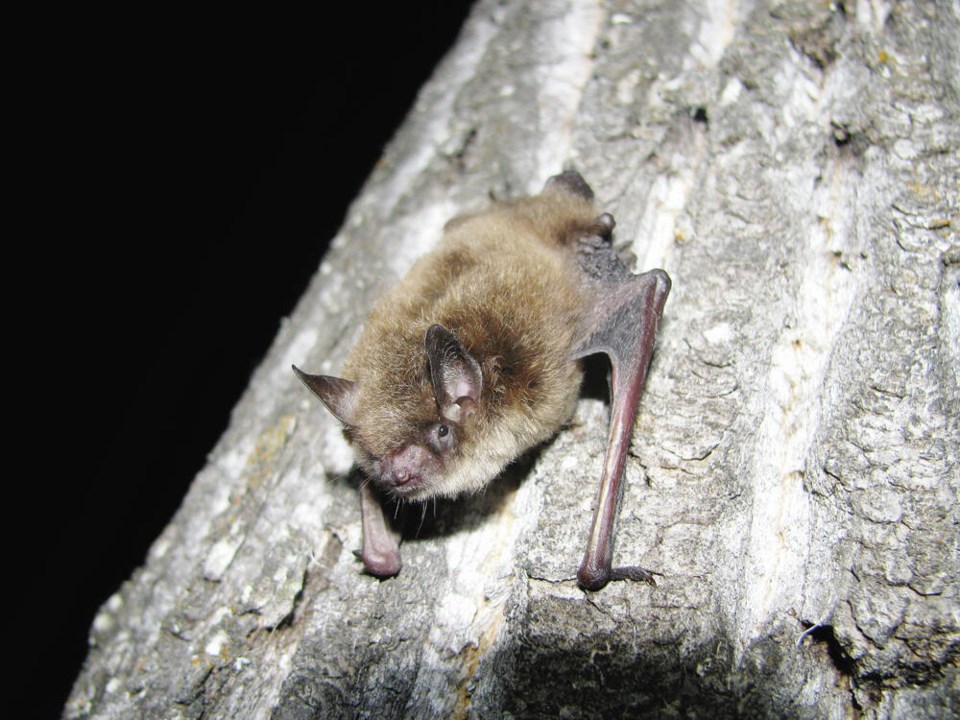Bat biologists from across western North America are gathering in Victoria this coming week to discuss the threat of white-nose syndrome and international conservation issues.
The three-day conference is the first ever Canadian-hosted gathering of the Western Bat Working Group, said Cori Lausen, director of bat conservation for the Wildlife Conservation Society Canada.
And it has never been more timely.
On April 3, the province confirmed that the fungus that causes the fatal white-nose syndrome in bats had been detected in their guano near Grand Forks. The fungus has killed more than six million bats in eastern North America. It was detected by Wildlife Conservation Society Canada in Alberta last year and has been in Washington state since 2016.
Bats infected with the rapidly spreading disease develop a white fungus on their nose and wing membranes during hibernation. The condition kills the bats by forcing them to wake up from hibernation and use their energy to groom the fungus off their bodies.
Since 2018, Lausen has been studying whether probiotics will prevent the disease. She and her team have been spraying maternity roosts in Greater Vancouver and have expanded the project to Washington state.
Bat biologists will also be addressing the threat of wind energy which quietly kills millions of bats, said Lausen.
“Wind energy production is anticipated to increase by 500 percent by 2050 and migratory bats are already being killed at an unsustainable rate,” she said.
On Monday, International Bat Appreciation Day, Bat Conservation International will be releasing its report, The State of Bats.
“Bats are important biodiversity and need protection,” said Lausen. “The more the public knows of the urgency, the more likely we can get the government to make the necessary changes including policies for wind energy and forestry industries to reduce bat fatalities and destruction of habitat,” she said.
ldickson@timescolonist.com
>>> To comment on this article, write a letter to the editor: letters@timescolonist.com



